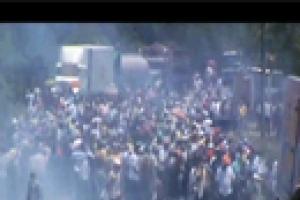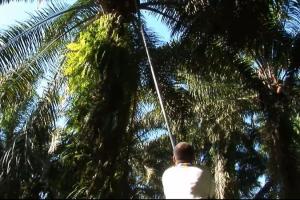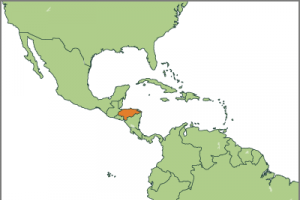REDD has been contentious ever since it was presented during UN climate talks in Bali, Indonesia, in 2007 as a way to supposedly reduce deforestation. In addition to pointing out that REDD as a carbon market instrument is a false solution to climate change, many indigenous peoples in particular have expressed concern that REDD will undermine indigenous peoples’ rights, become a mechanism that divides communities and will put indigenous peoples’ control over and access to their traditional territories at risk.
Honduras
Bulletin articles
30 April 2013
Other information
30 January 2013
The documentary video “Bajo Aguán: Cry for the Land” presented in Spanish in Honduras on December 10 during a Human Rights Forum organized by the Committee of Relatives of the Detained and Disappeared (see Bulletin 185), has been launched in the English version. The new video denounces rights violations under the exploitative oil palm plantation model, and can be seen and downloaded athttp://wrm.org.uy/countries/Honduras/Grito_por_la_tierra.html
Other information
30 December 2012
The documentary video “Bajo Aguán: Grito por la Tierra” (Bajo Aguán: Cry for the Land) (1) was presented in Honduras on December 10 during a Human Rights Forum organized by the Committee of Relatives of the Detained and Disappeared in Honduras.
Other information
30 August 2012
Six Garifuna´s cooperatives that have recovered their land are facingat this moment the threat of paramilitaries who move around on motorcycles and 4x4 vehicles with heavy weapons and could massacre the Garifuna inhabitants who are resisting the dispossession of their ancestral territories.
Bulletin articles
30 March 2012
Men and women peasant farmers in the Bajo Aguán valley in Honduras are suffering violent repression after organizing and taking action to regain control of their land, which had been granted to them as part of a thwarted agrarian reform process dating back to the early 1970s.
Bulletin articles
30 December 2011
Since December is the month in which International Human Rights Day is commemorated, we feel it is urgent to highlight the cases of two communities in countries that seem very distant from one another and yet have a great deal in common. In Honduras and India, these communities have been struggling for years against the new form of colonialism represented by powerful economic groups connected with oil palm plantations and the iron and steel industry, respectively.
Bulletin articles
30 August 2010
Honduras, que fue uno de los principales productores de granos básicos de Centroamérica, ha pasado a producir la mitad de sus necesidades. 2,8 millones de hondureños del área rural viven con un nivel de ingreso inferior a la línea de pobreza. Este grupo representa más del 75 por ciento de la población rural y más del 70 por ciento de los pobres de todo el país.
Bulletin articles
29 April 2010
Wetlands are ecosystems having a high biodiversity, temporarily or permanently flooded by fresh water, brackish water, mixed waters or sea water with a maximum depth of 6 metres. In some cases they form swamps, mud flats, peat bogs, lakes or lagoons, usually accompanied by grasses, seaweeds, mangroves or other vegetation. In some cases wetlands remain temporarily dry and devoid of vegetation and desert-like and become productive and full of life during rainy seasons.
Bulletin articles
29 April 2010
The concept of protected areas, born in the United States in the nineteenth century as an idea of conservation by establishing “national parks,” was part of the colonization of the “Wild West” and, in many cases served as an instrument to appropriate indigenous peoples’ territory, handing it over to the States, research centres or corporate interests. Although an international organization such as the International Union for the Conservation of Nature (IUCN) has acknowledged that when establishing protected areas, indigenous peo
Bulletin articles
17 October 2007
In Honduras, every year between 80,000 and 120,000 hectares are deforested.
Our forests are multi-diverse: pine forests, with a variety of seven species; broad-leafed forests, with 200 species of trees and rich biodiversity, particularly in the lowlands; broad-leafed cloud forests: pine or mixed forests in the highlands; broad-leafed in dry climatic areas; and mangroves.



